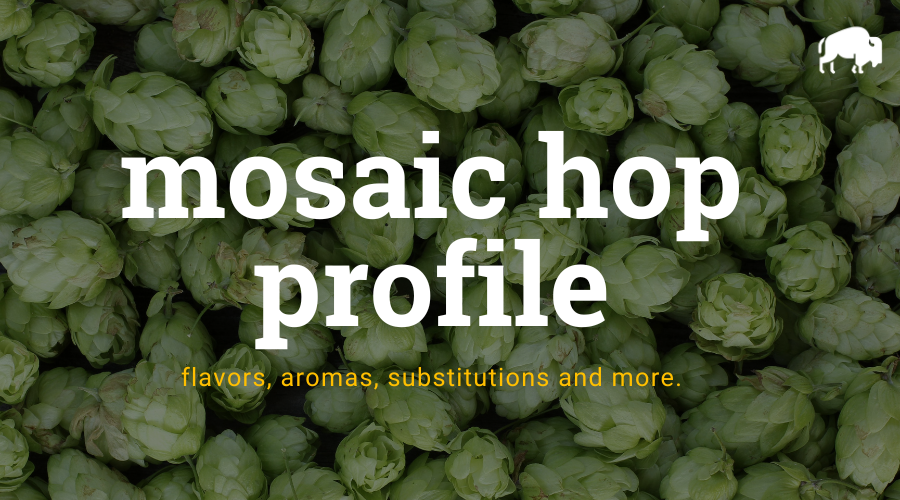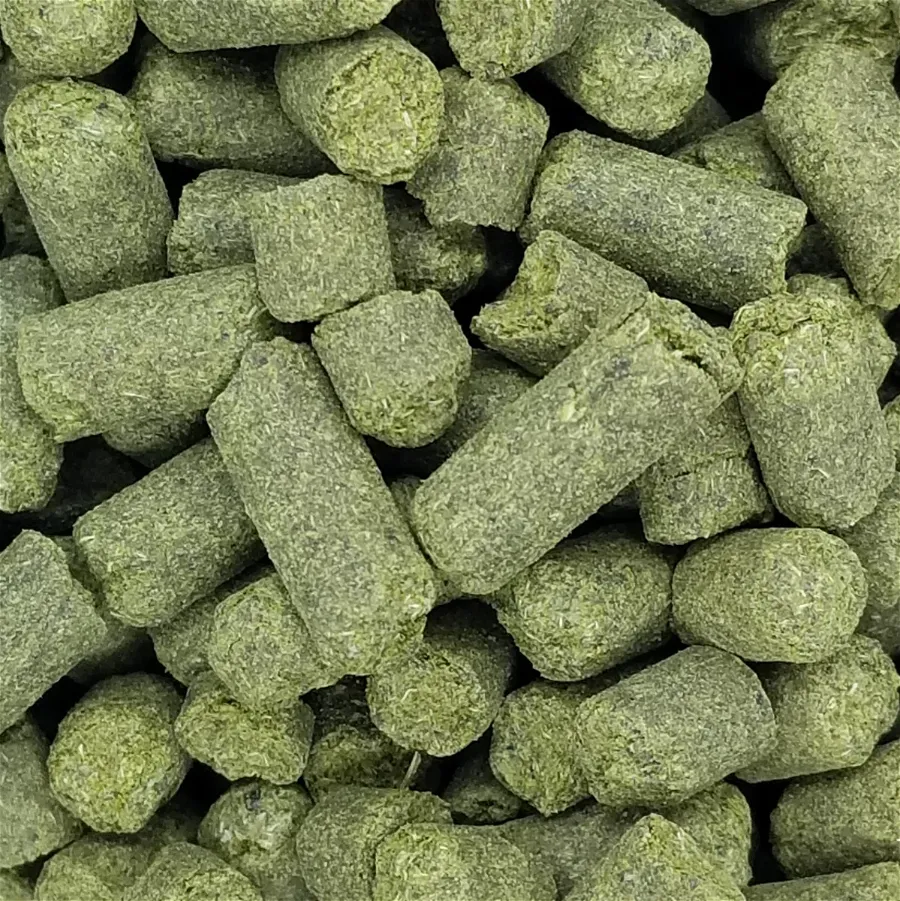
Mosaic hops, developed by Hop Breeding Company and released in 2012, are known for their unique and complex blend of floral, tropical, fruity, and earthy characteristics. It’s a daughter of Simcoe and a Nugget-derived male, offering aroma profiles of tangerine, lime, peach, passion fruit, and blueberry.
The flavor profile of Mosaic hops provides strong impressions of citrus oil, balsam pine, blueberry, peach, and tropical fruit, particularly shades of mango, lime, and mandarin orange. This versatile hop lives up to its name, with a mosaic of complementary aromas and flavors that change depending on the conditions it’s used in.
Mosaic hops are perfect for brewing beer styles such as IPAs, Pale Ales, Saisons, and Fruit Beers. Its distinct aroma and flavor profile makes it a popular choice for brewers looking to add an artistic and unique touch to their creations. Cheers to the endless possibilities with Mosaic hops!
| Usage: | Dual-Purpose |
| Country of Origin: | United States |
| Hop Growers Code: | HBC 369 |
Where To Buy Mosaic Hops
Intense aromas of fresh pine, mango, blueberry, and citrus are the main event when you brew with Mosaic hops.
Mosaic Flavor And Aroma
Mosaic is a dual-purpose hop that is often described to have the following aroma characteristics:

berry

citrus, tangerine

tropical
Mosaic Hop Oil Breakdown
Hop oils can vary from year to year and farm to farm but based on our research, here are the typical values we have seen reported. This information comes from various hop farms, The Hop Aroma Compendium, and For The Love Of Hops.
| Alpha Acid % (AA) Alpha acids are what is isomerized when boiling to create bitterness in beer. | 11.5% – 13.5% |
| Beta Acid % Beta acids are what give hops their more aroma and flavor compounds. | 3.2% – 3.9% |
| Alpha-Beta Ratio This ratio of alpha acids to beta acids determines how quickly bitterness fades during aging. Lower ratios are common for aromatic varieties. | 3:1 – 4:1 |
| Co-Humulone as a % of Alpha Higher numbers are said to impart a harsher bitterness. | 24% – 26% |
| Total Oils (mL/100g) With more total oils, typically comes a more complex hop profile but these are highly volatile compounds. | 1mL – 1.5mL |
| Myrcene green, resinous | 47% – 53% |
| Humulene woody, piney | 13% – 16% |
| Caryophyllene woody | 5% – 8% |
| Farnesene floral | 0% – 1% |
| Other Oils: Includes beta-ionine, beta-pinene, limonene, linalool, geranoil & selinene | 20% – 40% |
| Hop Storage Index (HSI) The HSI indicates the percent of alpha and beta acids lost after 6 months of storage at room temperature (68°F or 20°C). | Retains 74% alpha acid after 6 months storage at 20ºC (68ºF). |
| Hop Storage Index (HSI) Rating | Good |
Mosaic Hop Substitutions
Replacing one hop for another is seldom straightforward but sometimes you don’t have the right hop or the right quantity of hops for the beer you want to make. For those situations, we have made a comprehensive list of hops to substitute on brew day.
These substitutions aren’t perfect as hop chemistry is pretty complex.
We wanted to make this list of substitutions with varietals that are easy to find when possible. For Mosaic, we recommend substituting with the following hops:
Beer Styles
For the most part, any hop could have a place in just about any beer style. Based on popular beers, historical usage, and our own preferences, we would recommend using Mosaic for IPA, New England IPA, Pale Ale, Wheat Beer, Golden Ale. That being said, experiment and see what works best for you.
References
https://www.hopslist.com/
https://www.ars.usda.gov/
https://www.brewersassociation.org/
https://www.barthhaasx.com/
https://www.yakimachief.com/
Hieronymus, Stan. For The Love of Hops. Brewers Publications, 2012
The Hop Aroma Compendium. 2012


